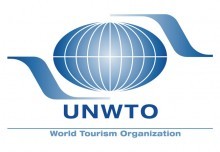 International tourist arrivals worldwide grew by 4 per cent between January and June 2016 compared to the same period last year. Destinations worldwide received 561 million international tourists (overnight visitors), 21 million more than in 2015, according to the latest UNWTO World Tourism Barometer. Growth accelerated in Asia and the Pacific with international arrivals up 9% through June, driven by robust intraregional demand. Oceania (+10%) led growth, followed by North-East Asia, South-East Asia (both +9%) and South Asia (+7%). “Tourism has proven to be one of the most resilient economic sectors worldwide. It is creating jobs for millions, at a time when providing perspectives for a better future to people of all regions is one of our biggest challenges. But tourism is also creating bonds among people of all nations and backgrounds, bringing down stereotypes and fighting fear and distrust”, said UNWTO Secretary-General, Taleb Rifai.
International tourist arrivals worldwide grew by 4 per cent between January and June 2016 compared to the same period last year. Destinations worldwide received 561 million international tourists (overnight visitors), 21 million more than in 2015, according to the latest UNWTO World Tourism Barometer. Growth accelerated in Asia and the Pacific with international arrivals up 9% through June, driven by robust intraregional demand. Oceania (+10%) led growth, followed by North-East Asia, South-East Asia (both +9%) and South Asia (+7%). “Tourism has proven to be one of the most resilient economic sectors worldwide. It is creating jobs for millions, at a time when providing perspectives for a better future to people of all regions is one of our biggest challenges. But tourism is also creating bonds among people of all nations and backgrounds, bringing down stereotypes and fighting fear and distrust”, said UNWTO Secretary-General, Taleb Rifai.
“Safety and security are key pillars of tourism development and we need to strengthen our common action to build a safe, secure and seamless travel framework. This is no time to build walls or point fingers; it is time to build an alliance based on a shared vision and a joint responsibility.” he added.
China, the world’s top source market, continued to report double-digit growth in expenditure on international travel (+20% in the first quarter of 2016), benefiting destinations in the region and beyond. The United States, the world’s second largest market, increased expenditure on outbound travel by 8% through July, thanks to a strong currency. Third largest market, Germany, reported a 4% increase in expenditure through July. Other markets that showed robust demand for outbound travel in the first half of 2016 were Spain (+20%), Norway (+11%), Australia (+10%) and Japan (+6%). Meanwhile expenditure from the Russian Federation and Brazil continues to be weak, reflecting the economic constraints and depreciated currencies in both markets.
Breaking News
- IndiGo Operational Crisis: Recent Updates
- Travl360 wins ‘Most Promising MICE Operator’ award at ITA, eyes growth & future opportunities
- Rajasthan gives nod to Tourism Policy 2025 to spur investment, safety & connectivity
- Tech-forward mindset is essential for succession success in travel agencies: Gaurav Luthra
- India announces free 30-day e-tourist visa & group visa for Russian travellers
- A Christmas in Kissimmee: A Place of Magic and Sunshine
- HOTREMAI reinstates Anil Malhotra for third Presidential term
- Cinnamon Hotels & Resorts prioritises guest safety, colleague support, and community recovery as affected properties resume full operations
- Strategic succession and tech adaptability key to future-proofing travel businesses: Rajan Dua
- Progress in ITA Airways–Lufthansa partnership; alliance prepares for Star Alliance entry in early 2026: Fabio Bigotti
- 90% of our revenue comes from India; OTAs, agents critical to our success: Vietjet Thailand VP – Commercial
 Tourism Breaking News
Tourism Breaking News


